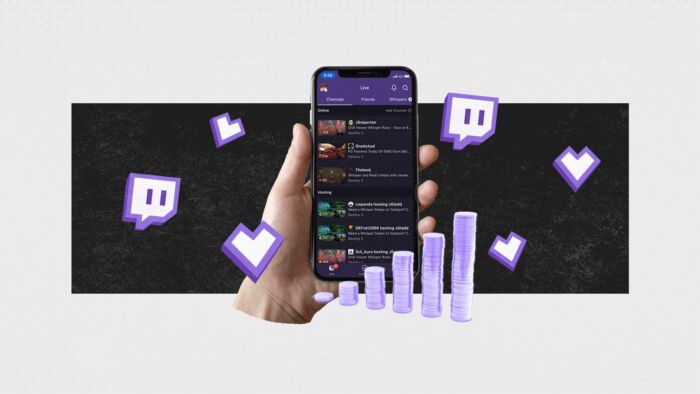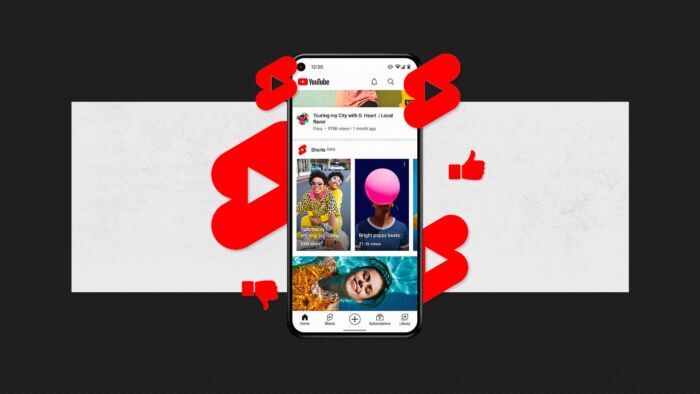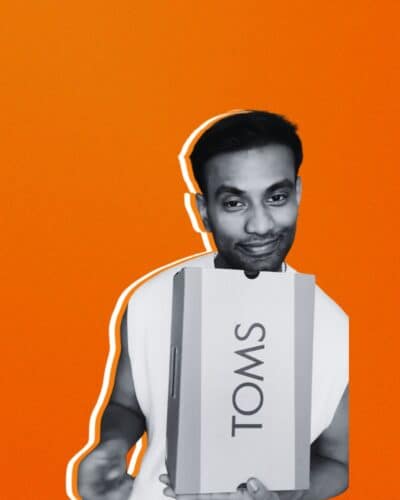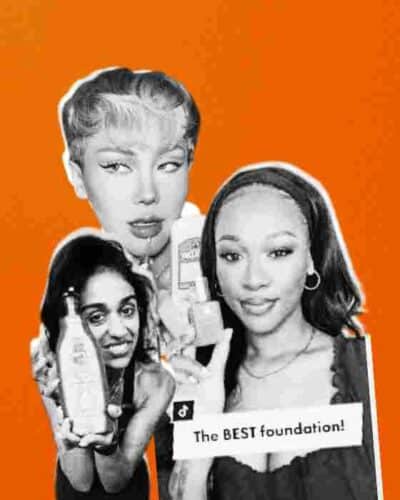Every week the Insights Team at The Goat Agency pull together the latest news from the social space in a weekly social media industry news round-up. This week we cover the issue YouTube faces with Shorts, Twitch’s latest issue with creator monetisation and Snap’s celebrity advertisement offering!
Don’t forget you can follow us on Linkedin, Instagram and Twitter for real-time announcements of all our new blog content!
Contents
YouTube Invites Creators To The Met Gala
Twitch Lose Another Top Creator To YouTube Gaming
Bretman Rock Hosts The Song Breaker Awards
FaZe Clan’s Latest Fintech Partner
Is Twitch Making a Big Mistake?
Instagram’s New Full-Screen Display
TikTok’s Profile Views Feature
The Snap X Cameo Advertiser Program
Twitter Launches Test of “Circles”
Facebook Shifts Away From Audio
Pinterest Launches “TV Studio” App
YouTube Invites Creators To The Met Gala
YouTube’s head of fashion and beauty, Derek Blasberg, brought a group of YouTube creators to the Met Gala for the third time. Interestingly, YouTube launched a dedicated Fashion landing page in 2019 and has since ensured creators have had a presence at the prestigious fashion event.
In the past, YouTube has invited the likes of Lilly Singh, James Charles and Emma Chamberlain. However, this year YouTube welcomed Marques Brownlee, Mark Rober, Alexa Chung and Lena Situations.
YouTube creators having a presence at the event highlights the impact digital personalities are having within industries such as luxury fashion. Furthermore, we are seeing huge fashion houses such as Louis Vuitton choose creators such as Emma Chamberlain as ambassadors.
To note, Instagram also invited a number of creators to the Met Gala, showing how social platforms are having a bigger presence at exclusive events, which helps drive engagement on content that is related. This was very much the reason for YouTube having a presence at Coachella. YouTube even stated in 2021 Met Gala content generated more than 650 million views on the platform and 35 videos around the event appeared on the Trending tab across more than 70 countries!
Twitch Lose Another Top Creator To YouTube Gaming
Former Twitch streamer Sykkuno has announced a new deal with YouTube that will see the creator live stream exclusively on the platform. The new deal was announced in a video that explored the creators’ origins as a streamer.
Like many streamers, Sykkuno has a YouTube channel where content is posted alongside his Twitch streams. However, this new deal takes the streamer away from Twitch, which is important as YouTube Gaming is looking to take a larger share of the streaming market – one that is pretty much dominated by Twitch.
Sykkuno previously had over 4 million followers on Twitch and has since moved exclusively over to his YouTube channel, which currently sits at around 2.72 million subscribers. It is important to note that Twitch is losing large creators, which is not surprising considering the criticism the platform is receiving from its community of creators that constantly highlight how the platform is falling short.
Bretman Rock Hosts The Song Breaker Awards
The Song Breaker Awards is an annual show put on by Logitech For Creators celebrating digital-native music talent. This year Lizzo performed, which all took place inside Roblox, hosted by creator Bretman Rock.
Logitech launched the Song Breaker Awards last year to spotlight the power of creators, which is timely considering the huge shift TikTok is having on the music industry and its influence on music charts.
This year, the Song Breaker Awards was hosted in the Metaverse, which went live on April 30th. It was no surprise Roblox took on the challenge to host the event, with the gaming sector being the first to deliver metaverse-like experiences where users can connect and explore virtual realms. We’ve already seen Fortnite have huge success in delivering virtual artist experiences with in-game shows from the likes of Ariana Grande and Travis Scott.
FaZe Clan’s Latest Fintech Partner
FaZe Clan is a hugely popular gaming organization with talent such as FaZe Banks, FaZe Bizzle and Faze Abezy. FaZe has essentially combined content creators and professional esports players to establish a global creative engine that has played a part in redefining gaming culture. Furthermore, FaZe recently hit headlines after they signed Snoop Dogg.
Now FaZe has partnered with Current – the fintech company that has in the past executed huge deals with the likes of MrBeast. Current is turning to FaZe to target younger consumers around the company’s mobile banking products.
FaZe also kicked off FaZe1, a recruitment drive that narrowed down thousands of creator submissions to appoint one applicant to join FaZe as the newest member and receive $1 million in crypto, a $250,000 GFuel sponsorship and a new Nissan GTR. Now, Current will also sponsor the final episode documenting FaZe1, giving runner-ups – 20 of them in fact – $1,000 on the Current app and $250 to re-gift to their fans.
Current, as part of the deal, will also give away $500 to FaZe fans who use the banking services. To note, in the past, Current ran an interesting partnership with MrBeast where the company engaged the creator’s fans with exclusive merch and rewards – so it appears the company is looking to do the same with the FaZe partnership.
Interestingly, Current has already collaborated with FaZe members, but this new partnership will be a larger strategy – following a trend of more and more brands leaning on gaming organizations to tap into new consumers.
Is Twitch Making a Big Mistake?

A report from Bloomberg has revealed that Twitch is looking to take a larger share of streamer revenue. Currently, the Amazon-owned streaming platform takes 30% of creator channel subscriptions, which range from $5 and $25 per month.
Twitch creators who are part of the Partner program across Twitch receive 70% of creator channel subscriptions, but this can differ according to individual contracts with Twitch. Now Twitch is looking to up the cut to 50%, the same cut that Twitch shares with Affiliate streamers. However, Twitch is also considering another solution that involves a tier-based system where some Partners continue with a 70% split and others drop to 50%. The idea here is a Partner works off incentives, unlocking a bigger percentage share if they, for example, are exclusive to the platform – giving Twitch an upper hand in negotiating contracts.
Twitch also wants more money from ads, first starting in this respect with an Ads Incentive Program that launched back in February. Creators are offered bonus payments for streaming a set number of hours running a specific number of mid-roll ads. This helps get more creators generating content on the platform, which the platform can then monetise. Twitch is now going to potentially build on this to create a more lucrative model for streamers and the platform.
However, how will creators react to a drop in revenue share? The platform has in the past been heavily criticised for failing its creators, and with every other platform working on more creator monetisation solutions, it is interesting that Twitch is looking to take a bigger share of creator revenue.
The Impact Of YouTube Shorts On Revenue

YouTube Shorts is gaining momentum with the TikTok challenger product bringing in more than 30 billion views per day.
However, with the influx of views on short-form videos, YouTube is seeing a dip in revenue growth due to a reduction in YouTube video watch time. YouTube, in its latest quarterly earnings call, reported coming in under revenue expectations, achieving $6.87 billion as opposed to the projected $7.51 billion.
Essentially, what has occurred is the popularity of 30-60 second content has exploded on the platform and viewership is being pulled away from the long-form video. This shift was bound to be expected, with YouTube facing the next challenge of finding an ad solution that earns revenue to the same degree as with its longer videos.
The CEO of Alphabet, the company that owns YouTube, has confirmed YouTube is working on testing ads for Shorts, aiming to close the gap between short and long-form content monetisation. If YouTube can get there before TikTok, it will be a huge win as TikTok is currently struggling in this respect.
TikTok is already rolling out longer videos to the tune of 10 minutes, but YouTube offers an existing benefit for creators, as Shorts can be used as a tool for subscriber growth, building audiences to then monetise longer-formats and shorter formats. However, Shorts is not generating money for YouTube at present, so it is important for YouTube to find a solution that feeds into platform and creator revenue.
Instagram’s New Full-Screen Display
Instagram has launched an initial test of a full-screen main feed display, which shows posts and Reels content like the TikTok feed.
This all supports Instagram’s 2022 focus on video and short-form video, leaning into the usage of Reels that is exploding on the platform. According to Mark Zuckerberg, Reels is taking up 20% of users’ time in the app. Therefore, Instagram is looking to replicate the user experience within Reels to the main feed to attract more engagement on other content formats.
To note, tests have been spotted that bring Reels, posts and Stories under one scrollable feed, but this recent test just combines posts and Reels. Stories combined into a consolidated feed might be the end goal as that will enhance the effectiveness of algorithm indicators on all content posted across the app.
However, do not expect Instagram to move fast on consolidating all content into a single display as at present the different placements of ads are generating money for the platform. Instagram must first figure out how the user experience can be enhanced whilst not losing money with reduced ad placements.
TikTok’s Profile Views Feature
TikTok has added a “profile views” feature that allows people to see which users have visited their profiles within the last 30 days.
More users are seeing this feature being rolled out after initially being spotted as a test back in January. The feature appears on TikTok profiles in the top right-hand corner as an eye-shaped symbol. When the symbol is tapped, users see a list of accounts that have viewed their profile with the ability to click through to the visitor’s account.
The feature is only available to users 16 and older and accounts with 5,000 or fewer followers – possibly due to larger accounts having too many viewers to track with this new feature. However, the idea of this feature is to help smaller accounts grow and connect with each other.
The “TikTok Pulse” Program
TikTok has announced the launch of the “TikTok Pulse” program, enabling advertisers to put ads alongside popular content. This is yet another example of how TikTok places content first, unlike other platforms that take a demographic targeting-first approach.
The new program will also provide a new revenue-share option for creators, which comes at a much needed time with the Creator Fund becoming less effective in the eyes of many. The new monetisation solution will offer creators and publishers with at least 100,000 followers a revenue share – similar to YouTube’s partner program.
The Pulse program essentially allows advertisers to place ads alongside TikTok content that is in the top 4% of top-performing posts on any given day. The performance of said videos is based on engagement and views, ensuring brands get maximum exposure.
Advertisers will be able to choose from 12 categories of trending content including beauty, fashion and gaming. Ads will also only be placed alongside verified content to maintain brand safety precautions.
The Snap X Cameo Advertiser Program
Snap has announced a new partnership with the celebrity video shoutout platform Cameo. The new partnership will enable advertisers across the Snapchat platform to pay Cameo members to create short video ads.
The new partnership is named the “Snap x Cameo Advertiser Program”, which brings to market a new approach to celebrity endorsements, opening doors to over 45,000 celebrities that are currently using Cameo. Interestingly, Cameo really took off during the pandemic as another means for celebrities to make money when film sets, shows and other traditional means of making money were off the table.
Gymshark has used Cameo in the past to create viral campaigns with celebrity talent – the gym apparel brand did so around their infamous Black Friday sale. Therefore, celebrity video ads do have the potential to have a viral moment and the new program certainly offers a solution for booking celebrity talent, which has been a pain point in the industry. Simplifying the process of booking celebrity talent was actually the idea of Fyre – the platform that was meant to be launched with the Fyre Festival. Unfortunately, the platform never saw the light of day due to the infamous music festival disaster.
Twitter Launches Test of “Circles”
Twitter is launching a public test of “Twitter Circles,” which allows users to share tweets with a specific group of connections in the app.
Twitter allows users to add up to 150 people in a “Twitter Circle” to then share certain tweets with. This essentially creates a group chat that is private around a tweet, giving more audience control to creators.
Members of a “Circle” will be alerted when tweets are only viewable to those in the group with a green indicator attached to the tweet.
However, this functionality is somewhat possible through other features rolled out so it will be interesting if this test sticks around or is shelved like Fleets.
Facebook Shifts Away From Audio
During the social audio boom throughout the pandemic, platforms all ran to create audio features to tap into usage trends. However, as we shift to a post-Covid world, platforms are seemingly moving away from social audio.
Facebook is no exception, officially removing its podcast support and display options, which launched last year. Facebook will soon stop people from adding podcasts to the service, discontinuing its short-form audio product Soundbites and removing the central audio hub.
This speaks to the decline of the likes of Clubhouse, which has become seemingly irrelevant as the focus has been shifted to video for most platforms.
Furthermore, Meta has a trend of suddenly pulling features from its platforms which can leave creators in difficult positions – this new update is no exception. This has highlighted a need for cross-platform presence as creators, marketers and advertisers have learned the hard way not to go all-in on a singular platform.
Pinterest Launches “TV Studio” App
Pinterest has launched a “Pinterest TV Studio” app, facilitating live-streaming. The app is currently available on Apple and Google Play stores. However, only select users will have access. Upon downloading the app, creators must enter a code or scan a barcode that Pinterest has provided.
The app enables creators to improve live-streaming setups, providing multiple camera capabilities, and improved editing among other features. This new app paves way for the platform to push live commerce on the platform, feeding into Pinterest TV which launched in November of last year.
We are seeing more and more platforms lean into live-commerce capabilities, with TikTok certainly leading the way due to the learnings from its Chinese counterpart, Douyin.
And that’s all for this week, but don’t forget to follow us on Linkedin, Instagram and Twitter for real-time announcements of all our new blog content!





